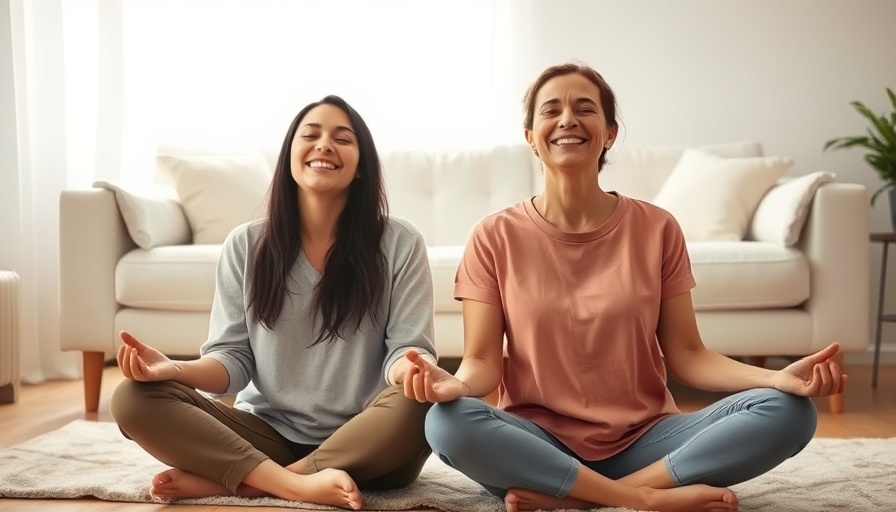
Modeling Mindfulness: Transform Your Conversations with Kids
Mindfulness is not just a practice for adults; it can be an invaluable tool when communicating with children. By cultivating mindfulness in our conversations, especially in educational settings, we set the stage for children not only to understand but to internalize calmness, kindness, and clarity. Drawing from research and practical experiences, we explore how to model mindfulness effectively while engaging with kids.
The Power of Mindful Communication
Kids are incredibly perceptive, often picking up on subtle cues during conversations. They are in a phase of incessant exploration, testing boundaries, and absorbing lessons from their surroundings. Communication, particularly the way it is framed, can significantly affect how children perceive feedback. For instance, when educators approach conversations with a mindful attitude, it cultivates a learning environment where children feel secure and supported. A study conducted with nearly 600 high school students demonstrated that those who perceived their teachers as mindful showed heightened levels of mindfulness and compassion over the school year. This indicates that the mere act of modeling mindfulness can create a ripple effect, leading to improved emotional and social development among students.
Why Mindfulness Matters: Insights from Research
The benefits of mindful communication extend beyond mere interaction skills. Research in educational psychology emphasizes that a teacher’s presence—not necessarily a formal lesson—can have powerful implications for student well-being. Teachers characterized by calmness, clarity, and kindness not only impart knowledge but also model behaviors children can emulate. When children witness adults responding mindfully, they learn how to engage with their peers and the world around them. This sets in motion a framework for wise feedback, where criticism is replaced with constructive guidance.
Strategies for Mindful Feedback
Providing feedback to kids can be tricky. Here are several practical strategies to incorporate mindfulness:
- Use Clear and Kind Language: Instead of saying, “Don't do that,” try rephrasing to, “I think it would be better if we…” This approach softens the message and opens a dialogue.
- Pause Before Responding: Taking a moment before responding, especially in emotionally charged situations, allows you to choose your words more carefully, fostering mindfulness.
- Create Mindful Language Cheat Sheets: Consider drafting common phrases that embody mindfulness—these can serve as quick references during challenging conversations.
Emotional Awareness: A Key Component
Developing emotional awareness is integral to mindful communication. By acknowledging and validating feelings, both yours and the child's, discussions can become more meaningful. This emotional intelligence not only strengthens bonds but also teaches children the importance of empathy towards themselves and others. Remind them that it’s perfectly fine to feel frustrated or sad, and that these emotions are valid. This simple yet profound shift in attitude can foster resilience and emotional growth.
Future Implications: The Ripple Effect of Mindfulness
The implications of incorporating mindfulness into our conversations with children extend far beyond school. Consider the broader societal context: when mindfulness principles are applied within family dynamics, the lessons endure, shaping emotionally intelligent adults. As children grow, the values of empathy and effective communication will guide their interactions, providing a foundation for future relationships whether personal or professional. Mindfulness doesn’t just teach children how to respond; it empowers them to improve their responses across various situations.
As we move toward a society that increasingly emphasizes mental health, understanding the role of mindfulness in communication with kids is essential. It serves as the first step in viewing challenges—whether in school or at home—in a more compassionate and constructive light. We must remember: the best lessons are often taught through our everyday interactions, filled with intention and mindfulness.
In conclusion, fostering an environment that promotes mindful dialogue reaps immense benefits for both children and adults. The journey towards creating mindful conversations may be gradual, but the potential for positive outcomes makes it worth the effort. Let’s embrace the transformative power of mindful communication and take actionable steps to implement these practices into our daily interactions with children.
Modeling mindfulness is more than just a skill; it’s a gift we offer to the next generation, helping them navigate their world with presence and care.
 Add Row
Add Row  Add
Add 




Write A Comment